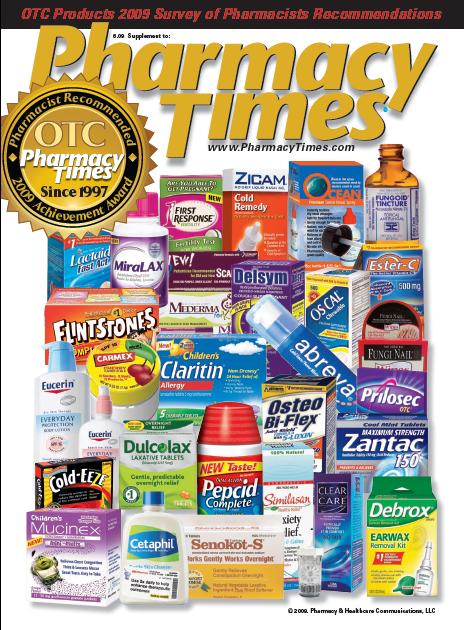Publication
Article
OTC Guide
Being "Medwise"-10 Tips for Parents
To help parents and caregivers select and use children’s OTC medicines correctly, the National Council on Patient Information and Education has developed these 10 tips to “be medwise”:
1. When in doubt, ask first. Your child’s health is too important for guesswork. So any time you have a question about which OTC medicine is best for your child or how and when to give the medicine, ask your doctor or pharmacist first.
2. Make sure the pediatrician knows about all the OTC medicines your child takes before he or she writes a new pre-scription. Similarly, if your child takes prescription medicines, check with your pediatrician or pharmacist before giving your child an OTC product.
3. Know your child’s weight so you can give the proper dose of the medicine as recommended on the product label. Most pediatricians and pharmacists agree that the child’s weight is the best way to determine the correct dose. For this reason, health professionals often recommend that parents keep an accurate scale in the house so that they can check the child’s weight before giving OTC medicines.
4. Follow the directions on the label carefully. Because OTC drugs are serious medicines that can do harm if taken incor-rectly, always read the entire label information before giving a child any OTC product. In this way, you will be certain that you have selected the right product, understand the dosing instructions, and are aware of any warnings or precautions that could apply.
5. Use the specific dropper, dosing cup, or other device that comes packaged with your child’s medicine. Because kitchen spoons and other household utensils vary in size and are not accurate enough to measure doses of medicines, using them can result in giving your child either too large or too small a dose of the medication. The same thing can happen when you use a dosing device from a different children’s medicine.
6. If using multiple OTC medicines, you have to watch for both duplicate ingredients and usage. First, check the active ingredient(s) used in each OTC medicine and make sure that you are not giving your child more than one product with the same active ingredient without first checking with a health care professional. Because many cough and cold preparations contain the same active ingredient as pain relievers, it is possible to give a child 2 different products that contain the same active ingredient without realizing it. Second, check for usage duplication. For example, 2 cold medicines may contain different active ingredients, but both of those ingredients act as fever reducers. That is usage duplication, and it should also be avoided. To play it safe, read the “Drug Facts” label and compare. Do not be hesitant to ask your pediatrician or pharmacist for advice on product selection.
7. Give babies and children only those medicines that are especially formulated for their weight and age. Cutting adult-strength tablets in half or trying to estimate a child’s dose of an adult-strength liquid can result in an accidental over-dose. Similarly, giving older children liquid medicines that are especially formulated for babies can also lead to dosing er-rors.
8. Keep in mind that most OTC medicines are for temporary relief of minor symptoms.
If the condition persists or gets worse, contact your pediatrician or other health care professional.
9. Don’t give medicines in the dark. This is often a problem because children get sick at night, and the parents can make a mistake reading the dosing device if they can’t see well.
10. Teach children that OTC medicines are not candy and they should not touch, sniff, or taste them on their own. Only let children take OTC medicines from a responsible adult. Keep all medicines and household products out of children’s reach.
©2002-2009 NCPIE - National Council on Patient Information and Education. www.bemedwise.org.







